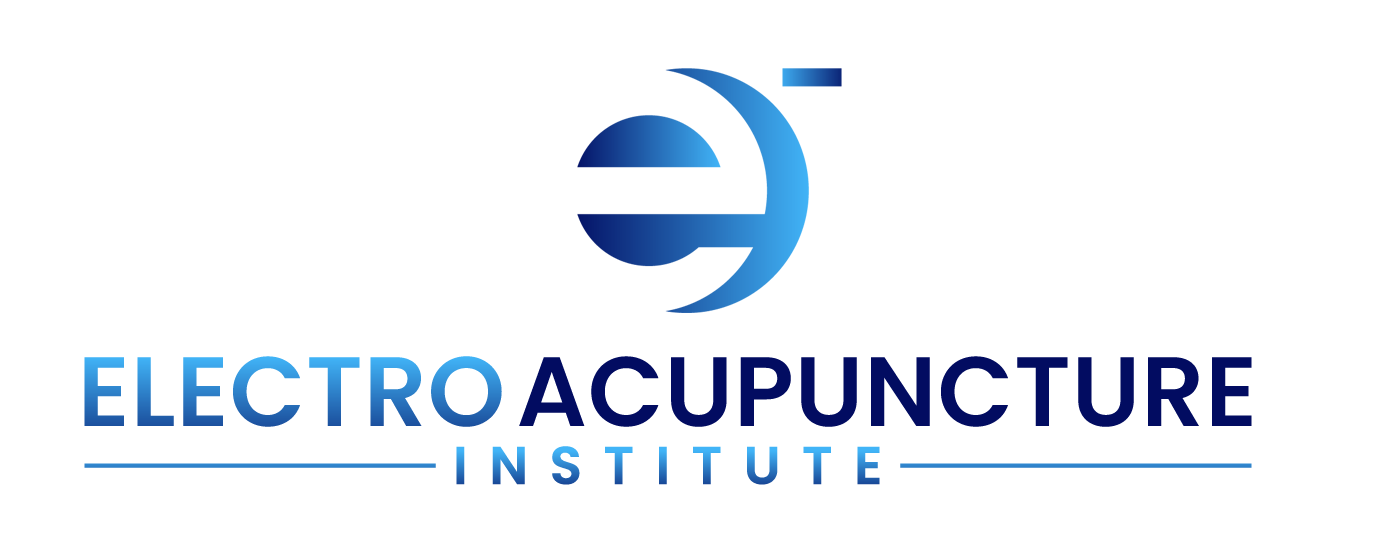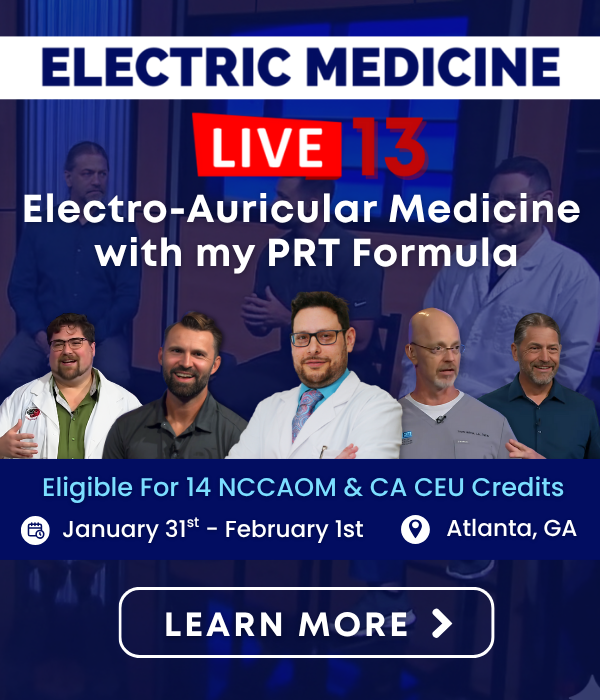Here’s the uncomfortable truth:
Most acupuncturists needle wherever the pain is.
The neck hurts? Needle the neck.
Occipital headache? Needle the occiput.
Sciatica? Needle where it burns.
Sometimes it helps. But often, the results stall. The patient feels better for a bit, then the pain comes back—or never fully clears in the first place.
Why?
Because pain is the end of the problem, not the beginning.
When a patient points to where it hurts, they’re not just showing you a sore spot. They’re showing you a place where voltage has collapsed—the far end of a failing channel, not where that channel actually broke down.
If you only treat where the voltage has already dropped, you’re always chasing symptoms instead of correcting the system.
In this training, Dr. Jeremy Steiner shows you a different way to work: Treat upstream, fill the entire channel, and let the voltage correct the pain.
After watching, download the accompanying resource to apply these concepts directly in clinic.
Download the resource now:
Pain = Decreased Voltage (Not Just “Qi Stagnation”)
In terrain medicine, pain isn’t random. It’s not a mystery the body is hiding from you.
Pain is a measurable voltage deficiency.
Anywhere the patient feels pain, you’re looking at an area where electrical charge has collapsed. The tissues, nerves, and channels in that region are no longer holding enough voltage to function normally. That’s why the brain flags it as pain.
So when a patient touches their pain and says, “It hurts here,” they’re literally pointing at a voltage sink—a place that’s starving for charge.
If you only needle that spot, you’re putting a Band-Aid on a blown fuse.
To fix the real problem, you have to restore voltage to the entire channel that feeds that location.
Category 3: Acupuncture Channels as Electrical Highways
In Dr. Jeremy’s terrain model, there are three key levels to understand:
- Category 1: Tissues
- Category 2: Neural levels
- Category 3: Acupuncture channels
Category 3 is where most acupuncturists think they’re working—but in reality, they’re often just poking around in sore tissue, hoping to hit the right spot.
Here’s the shift:
Acupuncture channels are electrical highways, not just lines on a chart.
They move charge in a specific direction, and the numbering system actually tells you how that current flows.
- Fascia is unidirectional.
- Channels are unidirectional.
- Electricity follows the path of least resistance and flows along these channels.
So if the pain is at gallbladder 20 and the channel is deficient, the problem didn’t start there. That’s just where the lights finally went out.
To correct it, you have to fill the channel from upstream.
Example: Occipital Headache on the Gallbladder Channel
Let’s make this real.
A patient comes in with an occipital headache.
You ask, “Where does it hurt?”
They reach back and put their finger right on the gallbladder channel at the occiput.
That tells you two things immediately:
- The gallbladder channel is deficient.
- The pain is where the voltage has already collapsed, not where the problem began.
You could needle right at the pain. You’ll probably get some relief.
But you’ll miss the opportunity to fill the entire gallbladder channel and create a deeper, longer-lasting result.
Instead, you go upstream.
One of Dr. Jeremy’s favorite points here is Gallbladder 1.
- It’s easy to find: at the end of the lateral eye crease.
- It’s shallow: you only need to get just under the skin.
- And because fascia is the most electrically conductive tissue in the body, you don’t need to dig into muscle. You just need to bypass the skin’s resistance so electricity can flow.
By treating Gallbladder 1, you’re not just treating one point—you’re filling the entire gallbladder channel, including the segment that runs through the occipital region.
Same channel. Same deficiency.
But now you’re treating the system, not the symptom.
This is exactly why acupuncturists need to stop chasing pain and focus on diagnosing the deficient channel.
“Can One Point Really Handle That Much?”
This is where practitioners usually get skeptical—until they see it in clinic.
- Occipital pain on the gallbladder channel?
→ Treat Gallbladder 1. - Tight traps and lateral neck pain along the same pathway?
→ Still Gallbladder 1. You’re filling the entire line. - Sciatic-type pain running down the lateral leg along the gallbladder channel?
→ You could needle Gallbladder 30 or 34 where it hurts…
→ Or you treat upstream at Gallbladder 1 and fill the whole channel.
The same logic applies to other channels:
Don’t like Stomach 1? Fine. You have options.
Stomach 1 through 9 can all function as early-channel points when you’re filling from upstream instead of chasing pain downstream.
The rule is simple:
If you’re using a Category 3 channel point, choose it early on the channel and let electricity do the heavy lifting all the way through.
Voltage, Devices, and Point Selection
In the training, Dr. Jeremy breaks down how to apply this thinking with actual devices and protocols.
Key ideas:
- With a higher voltage device (like Pointoselect or AAI), you may only need one Category 3 point per channel to fill it.
- With lower voltage devices, you compensate by using more points (for example, four vs. eight points total in the protocol).
- The strategy is the same: don’t fire at random. Choose upstream points, fill the channel, and let the current flow toward the collapse.
Remember: areas of less resistance are starving for Qi.
Those deficient segments become Qi receivers—they’ll soak up charge as soon as you open the pathway.
Your job isn’t to poke every painful spot.
Your job is to restore the pathway so those starving tissues finally get fed.
Bonus Effect: Fixing Problems Patients Don’t Even Mention
Here’s where terrain medicine gets fun.
Say a patient comes in with hamstring pain.
You identify it as a bladder channel issue and choose an early bladder point as your Category 3 channel treatment.
You run your protocol. The hamstring improves.
But then the patient comes back and says, “By the way, my mucus membranes feel way better too. I didn’t even think acupuncture could help that.”
You didn’t chase mucus membranes.
You just filled the bladder channel—and because the bladder channel feeds mucus membranes, those tissues finally got the voltage they needed.
This is what happens when you treat systems, not symptoms.
You get “bonus wins” in places the patient never thought to mention.
Why Some Treatments Last—and Others Don’t
If you’ve ever asked yourself:
- “Why did that treatment hold for weeks, but this other one faded in a day?”
- “Why am I getting good results sometimes, but not consistently?”
This is usually the answer:
When you treat only where it hurts, you’re just patching holes at the end of the line.
When you treat upstream and fill the channel, you’re correcting the actual collapse in voltage that created the pain in the first place.
That’s the difference between:
- Chasing symptoms
versus - Running a repeatable, system-level protocol that creates clean, predictable results.
Want to See This Step-by-Step?
In the full training, Dr. Jeremy walks you through:
- How to instantly identify which channel is deficient when the patient shows you their pain
- How to pick the right early-channel points (like Gallbladder 1 or early Stomach/Bladder points)
- How to structure your Category 1, 2, and 3 choices into a single, powerful terrain pain protocol
- How to use electroacupuncture devices and voltage correctly so you’re not guessing
If you’re tired of chasing pain and hoping for good outcomes, this is your roadmap.
Watch the full training and learn the terrain pain protocol step-by-step here: https://electroacupunctureinstitute.com/87
Take the Next Step
Download the resource now:
Watch it on YouTube: https://youtu.be/09czv_wqRGM
Stay curious, keep testing, and keep exploring the bridge between the body’s electrical and biological systems—because understanding that connection is where real healing begins.
Jeremy Steiner, MD, PhD, DAOM
Head Educator at The Electro Acupuncture Institute
For more great trainings go here: https://electroacupunctureinstitute.com/blog/





